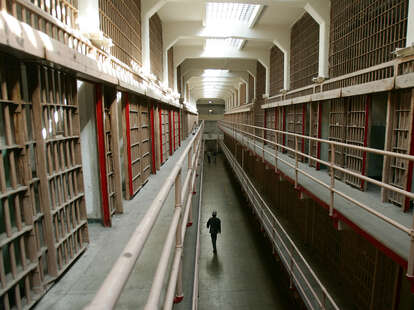
Workers at Lundin’s Candelaria mine. (Credit: Lundin)
Lundin Mining Corp. fell the most among copper-mining peers Tuesday after a giant sinkhole opened up above one of its underground mines in Chile, sounding alarms over safety and production.

Chilean authorities are investigating the sinkhole at Alcaparrosa, one of two underground operations that make up Ojos del Salado, which in turn is part of the Candelaria complex.
Lundin said Monday it had halted development work near the site, but that the sinkhole didn’t affect the community, workers or its annual output guidance. Still, analysts at BMO Capital Markets lowered their Candelaria production estimate to the midpoint of the guidance range.
The event is playing out as the mining industry lobbies against planned tax hikes in Chile and faces more onerous rules regarding the environment and local communities as part of a new constitution that will go to a popular vote next month. Lundin is looking into further expansions in Chile after recently spending $1 billion upgrading its operations there.
Company shares were down 6.1% at 10:41 a.m. in Toronto, the steepest decline among global rivals tracked by Bloomberg, with markets in Canada resuming after a public holiday Monday.
A photo of a circular hole of about 25 meters (82 feet) in diameter was posted on the Twitter account of geology and mining service, Sernageomin, which ordered work in the immediate area to stop as it evaluates the situation.
Candelaria produced 118,600 metric tons of copper last year, government data show. It’s indirectly owned by Lundin (80%) and Sumitomo (20%), with the former acquiring its stake from Freeport-McMoRan Inc. in 2014. Lundin Mining was founded by Swedish-Canadian billionaire Lukas Lundin, who died last week.
“Minera Ojos del Salado is carrying out technical analyzes and gathering external information to determine the causes of this event to update the information that has been provided to the authorities,” Lundin said in an emailed statement on Monday.
(By James Attwood)
Experts in Chile on Tuesday were investigating the appearance of an enormous sinkhole, bigger than a tennis court, that has appeared near a copper mine in the Atacama desert.
byAFP
August 3, 2022,

Experts were dispatched to examine the hole, some 32 meters (104 feet) across and twice as deep, which appeared in an area about 800 kilometers (nearly 500 miles) north of Santiago over the weekend, the National Geology and Mining Service (Sernageomin) said in a statement.
A 100-meter security perimeter has been erected around the hole in the Tierra Amarilla municipality, near the Alcaparrosa mine operated by Canadian firm Lundin Mining.
The company said in a statement there had been “no impact to personnel, equipment or infrastructure,” and the sinkhole has remained stable since its detection.
As a preventive measure, “development work in an area of the Alcaparrosa underground mine has been temporarily suspended,” the company said.
Sernageomin director David Montenegro said experts would seek to determine the cause of the collapse and “ensure that all safety measures are taken to safeguard the lives of workers and communities close to the site.”
Cristian Zuniga, mayor of the Tierra Amarilla municipality of some 13,000 inhabitants, told journalists the sinkhole was unprecedented.
“We ask that the cause be clarified: whether the collapse is the product of mining activity or something else,” he said.
Chile is the world’s largest copper producer, responsible for a quarter of global supply.
















